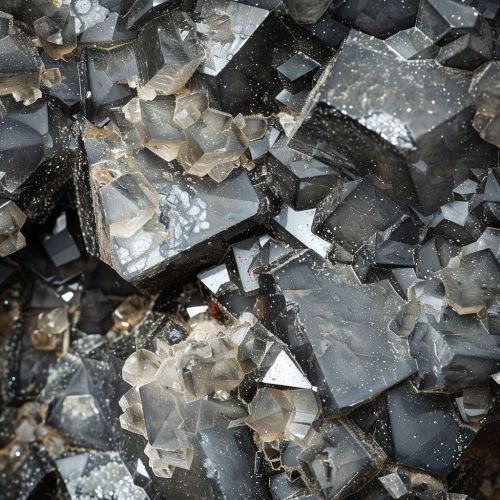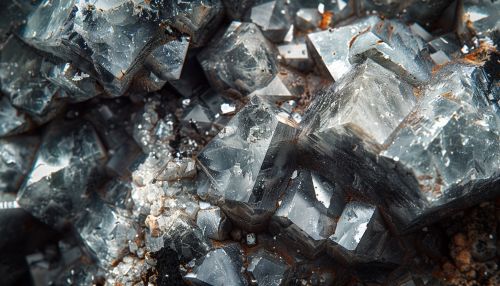Partial melting
Introduction
Partial melting is a geological process that involves the melting of some components of a rock, leaving behind a solid residue. It is a key process in the formation of igneous rocks, and plays a significant role in the evolution of the Earth's crust and mantle. The process is governed by the principles of phase diagrams and the thermodynamics of melting.


Principles of Partial Melting
The principles of partial melting are rooted in the field of thermodynamics, specifically the concepts of heat, pressure, and composition. When a rock is subjected to conditions of high heat and pressure, different minerals within the rock will start to melt at different temperatures. This is due to the varying melting points of the minerals, which are determined by their chemical composition and crystal structure.
The process begins with the heating of the rock. As the temperature increases, the minerals with the lowest melting points will begin to melt first. This initial melt, known as the "primary melt", is usually rich in silica and other light elements. As the temperature continues to rise, more minerals will start to melt, adding to the primary melt and changing its composition.
Factors Influencing Partial Melting
Several factors can influence the process of partial melting, including the temperature, pressure, and water content of the rock, as well as the presence of volatile elements.
Temperature
Temperature is the most direct factor influencing partial melting. As the temperature of a rock increases, the kinetic energy of the atoms within the minerals also increases. When the kinetic energy is high enough, the bonds between the atoms can break, leading to the formation of a melt. The specific temperature at which a mineral starts to melt is known as its "melting point".
Pressure
Pressure also plays a significant role in partial melting. High pressures can increase the melting point of a mineral, making it more difficult for the mineral to melt. This is because the increased pressure forces the atoms within the mineral closer together, strengthening the bonds between them and requiring more energy to break these bonds.
Water Content
The presence of water can greatly lower the melting point of a rock. Water molecules can break the bonds between the atoms in a mineral, making it easier for the mineral to melt. This is why wet rocks tend to melt at lower temperatures than dry rocks.
Volatile Elements
Volatile elements, such as carbon dioxide and sulfur, can also influence the process of partial melting. These elements can form gases at high temperatures, creating pressure within the rock that can help to initiate melting.
Results of Partial Melting
The process of partial melting can result in the formation of a variety of different rock types, depending on the composition of the initial rock and the conditions under which the melting occurred.
Igneous Rocks
The most common result of partial melting is the formation of igneous rocks. These rocks are formed from the solidification of a melt, and can be classified into two main types: intrusive and extrusive.
Intrusive igneous rocks, such as granite, are formed when the melt solidifies beneath the Earth's surface. These rocks are characterized by their coarse-grained texture, which is a result of the slow cooling of the melt.
Extrusive igneous rocks, such as basalt, are formed when the melt solidifies on the Earth's surface. These rocks are characterized by their fine-grained texture, which is a result of the rapid cooling of the melt.
Metamorphic Rocks
In some cases, partial melting can also lead to the formation of metamorphic rocks. These rocks are formed from the alteration of existing rocks under conditions of high heat and pressure. The process of partial melting can contribute to this alteration by changing the composition of the rock and facilitating the movement of fluids within it.
Conclusion
Partial melting is a complex and important process in the geological evolution of the Earth. It is responsible for the formation of a wide range of rock types, and plays a key role in the dynamics of the Earth's crust and mantle. Understanding the principles and factors influencing partial melting is crucial for geologists and earth scientists in their study of the Earth's interior and the processes that shape its surface.
